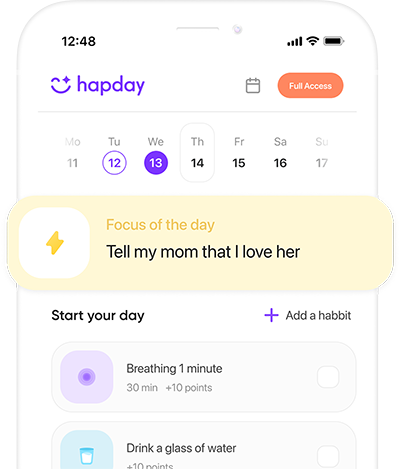Table of Contents
- Introduction
- Decoding ASD-Related Burnout
- Root Causes of Burnout
- Recognizing Burnout Symptoms
- The Crucial Need for Awareness
- Effective Coping Strategies
- Embrace Self-Care and Routine Flexibility
- Sensory-Friendly Environment
- Balanced Social Engagement
- Open and Honest Communication
- Seek Professional Guidance
- Consider Medication
- Set Realistic Goals
- Conclusion
Introduction
Autism Spectrum Disorder (ASD) is a multifaceted condition that brings unique ways of seeing and interacting with the world. While much attention is given to how it affects communication and behavior, there’s one silent struggle that’s often overlooked: burnout experienced by those on the spectrum. This specific type of exhaustion can profoundly impact both mental and physical health. Here, we delve into what ASD-related burnout entails, recognize its signs, and suggest practical strategies to help ease the load.
Decoding ASD-Related Burnout
Burnout in individuals with ASD is a deep-seated state of physical, mental, and emotional depletion. It’s a direct result of enduring external pressures that are particularly challenging for neurodivergent individuals. While burnout is a universal experience, people with ASD face it more frequently due to their unique daily challenges.
Root Causes of Burnout
- Social Overload: Engaging in social interactions can be demanding for those with ASD. Navigating social norms, understanding non-verbal signals, and fitting into societal expectations can be exhausting.
- Sensory Overload: With heightened sensitivities, bright, loud, or hectic settings can be quite overwhelming. Such environments contribute significantly to burnout.
- Cognitive Overload: Processing everyday information and adapting to typical societal functions demand more mental energy, often leaving individuals feeling drained.
- Masking: The effort to hide or suppress autistic traits to blend in socially can be mentally taxing, leading to emotional fatigue over time.
- Disrupted Routines: While comforting routines are beneficial, unexpected changes can be distressing, piling on more stress.
Recognizing Burnout Symptoms
Symptoms of burnout vary, but some telltale signs include:
- Profound, persistent exhaustion.
- Heightened responses to sensory inputs like noise and light.
- Emotional volatility, including irritability and anxiety.
- Cognitive struggles, notably in concentration and memory.
- Reduced ability to manage daily tasks.
- A tendency to withdraw from social gatherings.
The Crucial Need for Awareness
Identifying burnout is a critical step toward effective management. Overlooking these signals may result in serious mental health conditions. Raising awareness among caregivers and mental health professionals ensures the right support is in place.
Effective Coping Strategies
1. Embrace Self-Care and Routine Flexibility
Building a routine that nurtures physical and mental health is essential. Activities like mindfulness, yoga, or deep breathing offer ways to recharge. Studies highlight mindfulness-based practices as beneficial in lowering anxiety for those with ASD. Having a structured but flexible daily routine also provides stability, relieving anxiety without adding stress when changes occur.
2. Sensory-Friendly Environment
Cultivating spaces that minimize sensory overload can be transformative. Utilizing noise-canceling headphones or dim lighting and having comforting items like weighted blankets are simple yet effective changes. Being aware of personal sensory triggers can aid in sidestepping overwhelming scenarios.
3. Balanced Social Engagement
While interacting socially can drain energy, having connections is vital for emotional health. Focus on building deep, meaningful relationships over frequent, superficial interactions. Online communities can also provide a nurturing space for connection without taxing face-to-face demands.
4. Open and Honest Communication
Encouraging open dialogue about feelings and stress helps ease the silent burden. Constructive communication with family and friends fosters a supportive atmosphere. At work, advocating for reasonable accommodations such as flexible hours can ease workplace stress, supporting sustained mental well-being.
5. Seek Professional Guidance
Therapists skilled in ASD can offer valuable support through tailored approaches like Cognitive Behavioral Therapy (CBT), which help manage anxiety and boost emotional resilience. Collaboration with occupational therapists can tailor strategies to manage sensory issues and everyday tasks effectively.
6. Consider Medication
In certain cases, medication may aid in managing symptoms of burnout, especially if accompanied by anxiety or depression. It’s important to work closely with a healthcare provider to evaluate the benefits and potential side effects.
7. Set Realistic Goals
Realism in goal-setting is crucial. Breaking tasks into manageable steps and celebrating small achievements builds confidence. Knowing personal limits and avoiding over-committing can prevent unnecessary stress.
Conclusion
Burnout tied to ASD can be overwhelming, but it’s manageable. Through understanding its nuances and adopting supportive strategies, we can champion a more balanced and healthy life for individuals with ASD. Showcasing self-care, maintaining meaningful social connections, and getting professional assistance are key in this journey.
Supporting individuals with ASD means promoting greater inclusivity and understanding within society. Through these efforts, we can empower those on the spectrum to thrive, enriching our world with their distinctive insights and talents.



I found this article incredibly insightful! Burnout is often overlooked, especially in the context of autism. The strategies provided, like creating a sensory-friendly environment, can make a huge difference. It’s important to address these issues head-on to ensure a better quality of life for individuals with ASD.
Absolutely! I never realized how much social overload could impact someone with ASD. This article opened my eyes to the importance of understanding and accommodating those needs.
While I appreciate the suggestions, I feel like they might not work for everyone. Each person’s experience with autism is unique, and what helps one person might not help another. We need more personalized approaches!
This is a great resource! The emphasis on self-care is crucial—many people forget how important it is to take breaks and recharge. I’m curious about how effective mindfulness practices are in reducing anxiety among individuals with ASD.
I’ve seen mindfulness work wonders! It helps ground me during overwhelming moments. Definitely worth trying for those who haven’t yet.
Mindfulness has become such a buzzword lately, but it genuinely can help manage stress levels. More awareness around these practices could really benefit individuals with ASD.
#4 on open communication resonates deeply! It’s so vital to encourage discussions about mental health within families and friendships, especially for those on the spectrum.
“Consider Medication” sounds a bit concerning without proper context. Medications can have side effects and should always be discussed thoroughly with professionals before making any decisions.
“Set Realistic Goals” is such an important point! Breaking tasks down can make everything feel more manageable and less daunting for individuals dealing with burnout.
Funny how self-care feels so simple but can be overlooked easily! Everyone should take time to relax; it’s essential not just for those with ASD but for everyone!
Totally agree! It’s often the little things that make a big difference—like taking time to enjoy your hobbies or just unwind after a long day.
Agreed! Even something as simple as going for a walk can really help clear your mind and reduce stress levels!
This article really sheds light on a topic that’s often ignored. Burnout in individuals with ASD is so real, yet many people don’t understand its impact. The strategies provided here are practical and essential for anyone navigating this journey. Thanks for bringing awareness to such an important issue!
I find the idea of setting realistic goals particularly helpful. It’s easy to overwhelm ourselves with too much at once, especially when it feels like the world expects so much from us. It’s comforting to know that taking small steps can lead to big changes.
Absolutely! It’s all about pacing ourselves and acknowledging our progress, no matter how small. I’ve learned that celebrating even little victories helps boost my confidence and keeps me motivated.
While I appreciate the suggestions in this post, I sometimes wonder if they are enough to address the deep-rooted issues faced by those with ASD. Can self-care truly combat the systemic pressures that contribute to burnout? I’m not entirely convinced.
“Balanced Social Engagement” is such a crucial point! Sometimes, just having one or two close friends can make all the difference in feeling supported without being drained. It’s about quality over quantity!
“Seek Professional Guidance” is definitely something I believe in! Therapists can offer insights that friends and family might not be able to provide because they’re emotionally involved. Anyone else have experiences with this?
“Sensory-Friendly Environment” hits home for me! I’ve found that using noise-canceling headphones during busy times has significantly reduced my stress levels. What other sensory adaptations have worked for you all?
@AdventurousSpirit_42 I’ve also started using soft lighting at home; it makes such a difference! Even small changes can create a more soothing environment.
@AdventurousSpirit_42 Yes! Weighted blankets have become my best friend during anxious moments. It’s amazing how much comfort they provide!
“Embrace Self-Care and Routine Flexibility” is essential advice! Life throws so many unexpected challenges our way, and adapting while still prioritizing self-care can be tough but necessary.
I love this guide’s emphasis on communication! So often, we assume others understand our struggles when they may not have a clue what we’re going through. Talking it out really does help ease the burden.
The section on cognitive overload really resonated with me! There are days when just processing simple tasks feels like climbing a mountain. Recognizing that struggle is vital for understanding burnout!
Honestly, I’ve never thought about burnout in relation to ASD before reading this article—it was eye-opening! I’m grateful for these insights; they will help me support my friends who are on the spectrum better.